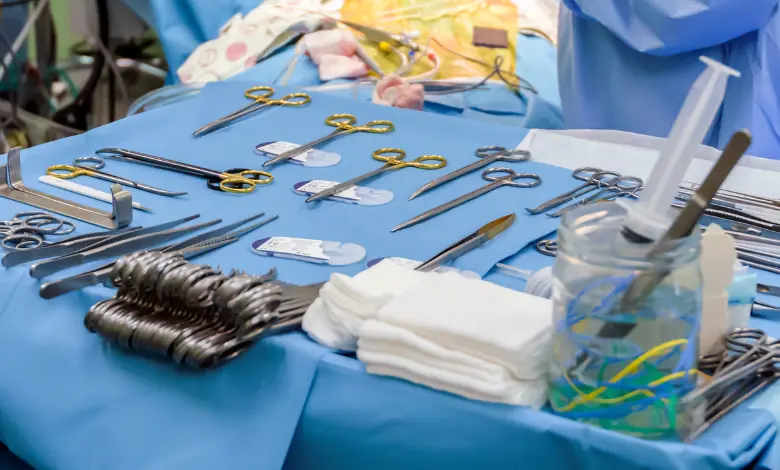Exploring the Precision of Surgical Tools: A Comprehensive Guide

In the intricate world of surgery, the use of specialized instruments is crucial for the success of medical procedures. These precision tools, collectively known as surgical tools, are designed to aid surgeons in performing delicate and precise maneuvers. In this comprehensive guide, we’ll delve into the various types of surgical tools, exploring their functions, significance, and the advancements that contribute to the evolving landscape of modern surgery.
1. Scalpels:
One of the most fundamental surgical tools, the scalpel, is a small and extremely sharp knife used for making incisions. These incisions can range from the initial opening in a surgical procedure to precise cuts for tissue dissection. Modern scalpel designs often feature replaceable blades, ensuring optimal sharpness and reducing the need for frequent resharpening.
2. Forceps:
Forceps are versatile tools for grasping, holding, or manipulating tissues and objects during surgery. With various shapes and sizes, forceps enable surgeons to handle delicate structures precisely. Examples include tissue forceps, hemostatic forceps for controlling bleeding, and dressing forceps for handling sterile dressings.
3. Scissors:
Surgical scissors come in diverse designs for cutting tissues, sutures, or other materials. Mayo scissors, with a blunt tip, are ideal for cutting heavy tissues, while delicate dissecting scissors are used for fine and precise cutting in intricate procedures. Advancements in metallurgy and design have led to ergonomic scissors that enhance the surgeon’s comfort and control.
4. Retractors:
Retractors are pivotal in creating a clear surgical field by holding back tissues or organs. These tools come in various shapes, including handheld and self-retaining retractors. Advances in retractors now include designs that minimize tissue trauma, allowing for more minimally invasive approaches in surgery.
5. Needle Holders:
Needle holders are designed to grasp and manipulate needles during suturing. With a locking mechanism, they provide surgeons with a stable grip, facilitating precise and controlled stitching. Needle holders contribute to the efficiency of wound closure and promote optimal healing.
6. Electrocautery Devices:
Electrocautery devices use electrical currents to cut or coagulate tissues during surgery. These tools are crucial for minimizing bleeding and ensuring a clear surgical field. Advanced electrocautery devices come with precise control settings, allowing surgeons to tailor the energy delivery to specific tissues.
7. Suction Devices:
Suction devices are essential for removing blood, fluids, or debris from the surgical site, maintaining visibility for the surgeon. These tools have evolved with innovations such as precise control over suction levels and specialized tips for different types of fluid removal.
8. Surgical Drills:
In orthopedic and neurosurgical procedures, surgical drills are employed for precise bone removal. These drills have become more sophisticated with features like variable speed settings, ergonomic designs, and attachments for specific surgical tasks.
9. Surgical Saws:
Surgical saws are utilized in orthopedic procedures to cut through bones. Advances in material science and engineering have led to the development of lightweight and efficient saws, reducing the impact on surrounding tissues during bone surgery.
10. Laparoscopic Instruments:
With the rise of minimally invasive surgery, laparoscopic instruments have become integral. These tools, including graspers, scissors, and cameras, are inserted through small incisions, allowing surgeons to perform procedures with reduced trauma, faster recovery, and improved cosmetic outcomes.
11. Staplers:
Surgical staplers have revolutionized tissue closure, especially in gastrointestinal and thoracic surgeries. These devices provide a quick and secure alternative to traditional suturing, reducing operative time and promoting consistent, reliable wound closure.
12. Microsurgical Instruments:
In delicate procedures requiring precision at a microscopic level, microsurgical instruments come into play. These tools, such as microscissors, forceps, and needle holders, enable surgeons to perform intricate tasks with unparalleled accuracy.
13. Harmonic Scalpel:
The harmonic scalpel utilizes ultrasonic vibrations to cut and coagulate tissues simultaneously. This innovative tool minimizes thermal damage to surrounding tissues, making it particularly useful in procedures where precision and minimal tissue trauma are paramount.
14. Tissue Glue Applicators:
Tissue glue applicators, often used in place of sutures, dispense medical adhesives to close wounds. These tools contribute to faster closure times and reduced scarring, particularly in procedures where aesthetics are crucial.
15. Laser Systems:
Laser systems have found applications in various surgical fields, offering precise cutting, coagulation, and tissue ablation. Laser surgery has become increasingly common in ophthalmology, dermatology, and certain types of cancer treatment.
As surgical tools continue to evolve, driven by advancements in materials, technology, and surgical techniques, the landscape of modern surgery is constantly changing. Surgeons and medical professionals benefit from these innovations, as they enhance precision, reduce invasiveness, and contribute to improved patient outcomes. The seamless integration of these tools into surgical practices underscores the commitment to pushing the boundaries of medical science and ensuring the highest standards of patient care.
Explore the world of words and ideas at www.wordplop.com – where inspiration meets expression.






